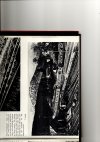Well, it was done differently then, each major coach yard had its own shunter (in Scotland often the less-common Class 06) to rearrange things. Even the first supposedly fixed formation sets in Scotland, the Edinburgh-Glasgow push-pulls, would get shunted around overnight, and occasionally turned up with only five coaches.
For Mk 2 stock, the first few years' build were vacuum braked, and just used mixed with their Mk1 predecessors. In the normal way, no new Mk 2/3 vehicles were allocated to Scotland (subject to correction here), and they arrived secondhand from 'down south' as they were in turn displaced there. Those Edinburgh-Glasgow push-pulls were original Mk 2 vacuum stock from the LMR, but were rebuilt at St Rollox works to air braking for the performance required, and thus kept to their own work. I've written before of some spectacular stops with these trains. Dual heating of stock was long common and straightforward, but dual braking is difficult, arranging for separate brake rigging and two sets of brake cylinders etc. A small number were done, but not many. Notably a Mk 1 BCK, ie one of everything, first, second and van, and dual braked as well (it may have been unique in this respect, and was possibly another St Rollox custom conversion) was kept in a siding - actually I think inside the old loco shed there alongside the station - at Carstairs in case any train, of any type, required a substitute vehicle.
The main reason "loose" hauled formations remained was the high proportion of mails/parcels/news traffic in vans, which worked to separate diagrams and ran through from one train to another. I believe some Far North trains could be 50% vans at certain times.


